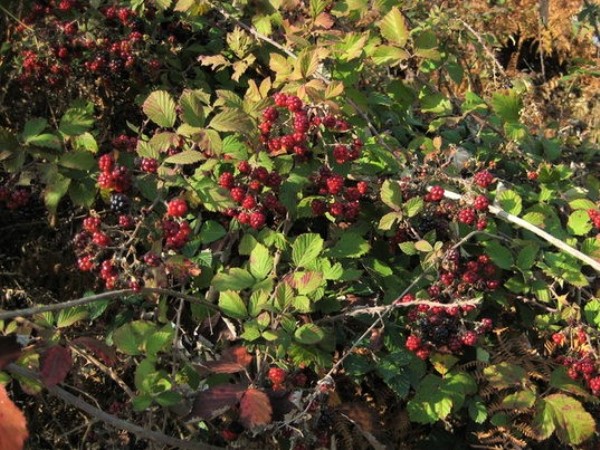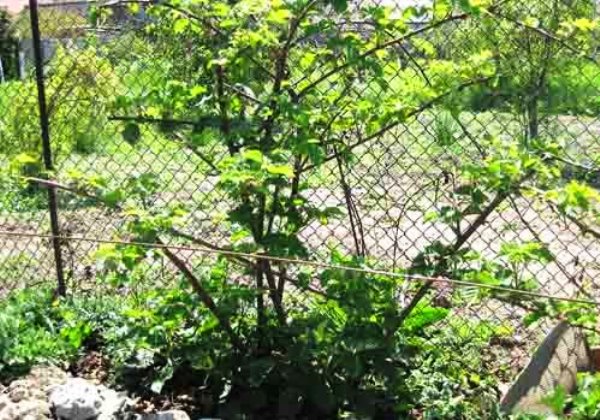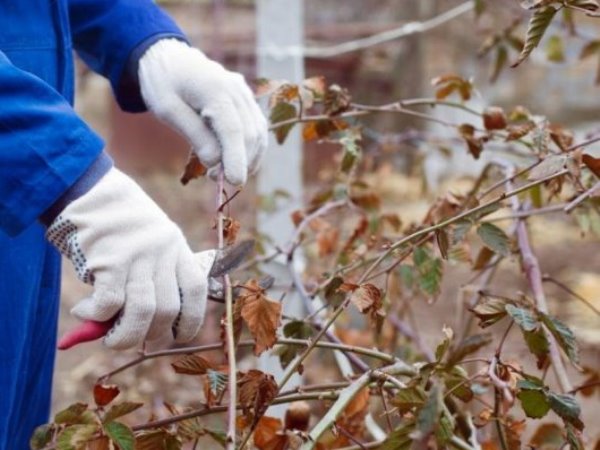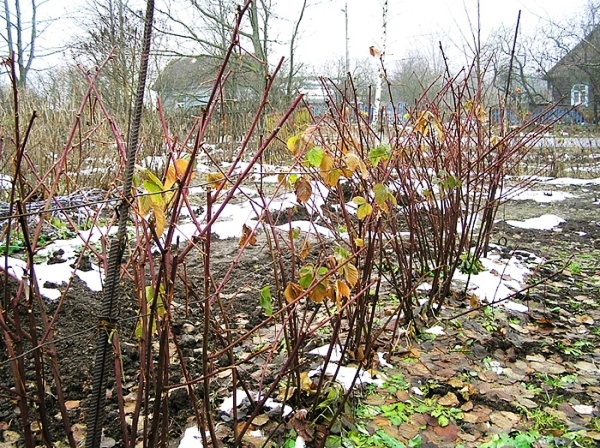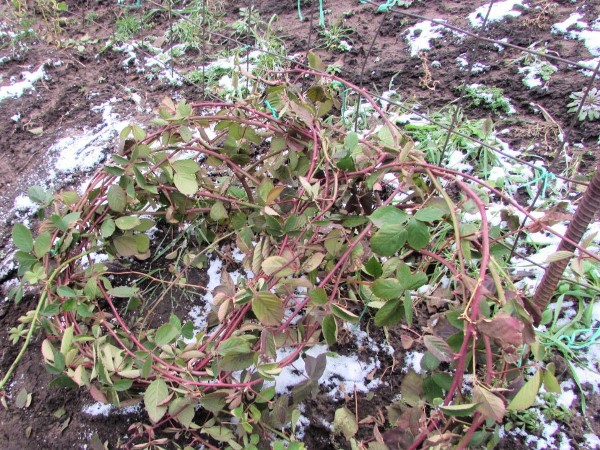Instructions for pruning blackberries in the fall for beginners
Content
Why prune blackberries in the fall
For garden blackberries, like most representatives of the Rubus genus, a two-year development cycle is characteristic. So, with a perennial rhizome, the useful life of the aerial part (shoots) is calculated in two years: in the first year, the young shoot grows, it is looked after, covered for the winter, and by the second year it becomes stiff, blooms in spring, and then brings a crop. This is where its function ends, and immediately after harvesting (in September) it must be removed. If the old stems are not removed, they interfere with the growth of new shoots and thicken the bush.
It should be clarified that not only old, obsolete shoots, but also a part of young annual shoots are subject to pruning. Weak, too thin or diseased stems of the first year should be removed at the base, and healthy and promising ones should be shortened by 20–40 cm. Such pruning contributes to abundant flowering next spring.
When pruning a bush for the winter, do not feel sorry for it - feel free to cut out all unnecessary. Blackberries have incredible growth power, and the more shoots are removed, the more new ones will grow.
The tops of young stems can be shortened by a third, since the fruiting zone of the blackberry is located in the center of the shoot.
In general, autumn pruning has several goals:
- efficient use of nutrients - old and worn-out shoots also need food;
- elimination of shade - old shoots create additional shade, which slows down the ripening of berries;
- increased winter hardiness and safety for the winter - thickened shoots with old stiff shoots are much more difficult to cover than young flexible shoots;
- increased productivity - pruning young shoots in autumn promotes abundant flowering and fruiting;
- strengthening the bush - if the thickets of blackberries are thinned out, young stems become more powerful and strong.
Cutting technology
Autumn pruning is carried out after the end of the harvest. For most varieties, this period occurs in early September. However, there is a garden blackberry with two waves of fruiting - for such varieties, the pruning procedure is carried out a little later (in October).
To trim correctly, you need to follow this sequence:
- At the first stage, all shoots that have borne fruit this year are removed - they should be cut off at the root, without leaving hemp, as they can rot, and spread this process to healthy branches.
- Among young shoots, insufficiently developed ones (short, thin) are also removed under the root - they will not bring a crop, so there is no need to leave them.
- Further, all diseased and damaged shoots are subject to complete removal (at the root) - they will not survive the winter and, moreover, can infect healthy branches.
- Now, based on the state of the root system, we calculate the possible load on the bush.On average, a healthy plant is able to fully provide 6-8 fruiting shoots with nutrients, so we leave the 10 strongest ones, in case several branches do not survive in winter, and cut the rest at the root.
- We shorten the remaining shoots by about 20-30 cm, if the branches are very long, you can cut more. The correct pruning is just above the bud.
In this state, the bush is covered for the winter. They remove the shelter in the spring, in March or April, it all depends on the temperature. Plants freed from shelter must be examined for the integrity and vitality of the shoots. Healthy branches look firm, with shiny brownish bark, frozen ones are loose and brittle and should be removed. Wintering is considered successful if 5–6 branches remain, it is also not bad if 4 are left - the yield will be at a good level. Three or fewer healthy lashes will not bring a big harvest, but the berries will be larger.
Bush formation
Since garden blackberries come in many types and shapes, pruning is not always quick and successful. It all depends on what kind of blackberry you are growing: creeping or erect. For example, erect bushes are more difficult to cover, since the shoots are poorly bent and very brittle, while creeping blackberries can form real thickets of long lashes, which are sometimes difficult to even divide.
To somehow simplify the pruning process, the formation of a bush is used - the direction of the shoots in the right direction.
As a rule, the formation is carried out in the spring, but if by the fall the bush has grown strongly and pruning has become difficult, then you can arrange the plants before pruning.
For blackberries with erect shoots, it is correct and convenient to use the fan forming method, which is as follows:
- All shoots must be lifted vertically onto the trellis, directly above the root.
- Next, we divide the bush into two parts and direct the lashes on both sides, like a fan, tying them to the bottom of the trellis.
- Now that all the shoots are visible in the root part, we first cut out all the old shoots that bore fruit this year at the root.
- Then we remove weak, too thin and sore young branches.
- We leave 8-10 of the strongest young shoots and shorten them by a quarter (20-40 cm).
- We remove the lashes from the support, press them to the ground and cover them with insulation.
The formation of creeping blackberry bushes occurs in a slightly different way. Its many-meter weaving shoots bend perfectly, but it is very difficult to cut and shape them, so the following method is used:
- Shoots are divided into old (fruiting this year) and young, which will yield next year.
- Then, they wind up on the trellis, like a thread on a spool - the old ones in one direction, for example, to the right, and the young ones to the left.
- Cut the old growth at the root.
- We leave 8-10 of the strongest young shoots, and cut out the rest.
- Next, we remove the blackberries from the trellis, fold them up again, put them in a prepared trench for wintering, and cover them.
The remontant varieties of berries deserve special attention. Their pruning and shelter is the simplest activity in all agricultural agricultural technology. You just need to cut out at the root all the shoots formed over the summer and cover with any insulating material - in the spring new lashes will grow, which will bloom and delight you with a bountiful harvest.
Video "How to Prune Blackberries"
This video will show you how to prune a blackberry bush and why it is important to do it in the fall.

